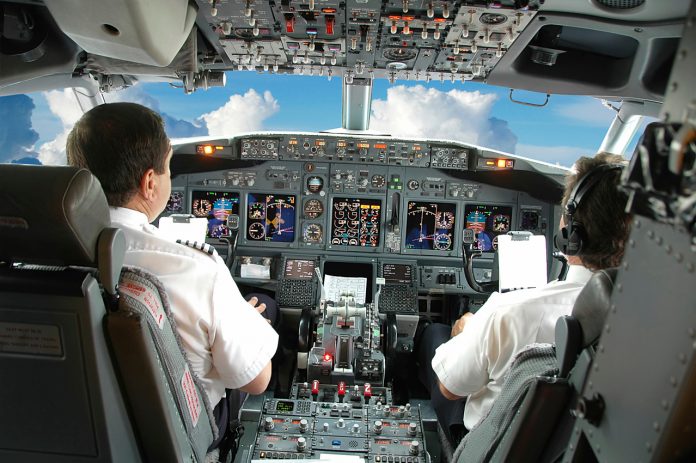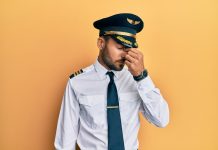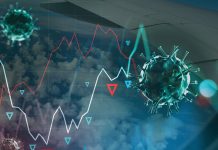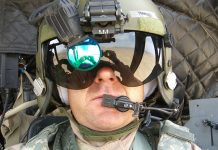By Capt. Laurie Shaw
The dichotomy of the present global situation is that the aviation industry is designed to connect people while, at the same time, COVID-19 forced directives and recommendations to disconnect people to help reduce the spread of the virus.
While social restrictions are now beginning to ease, the economic impact on the aviation industry will be felt for years to come.
This current crisis surpasses 9/11 many times over in terms of the negative impact on the industry, but there are some valuable lessons to be learnt. Initially, pilots were very proactive in seeking information and communicating with each other but, as time went on, many withdrew and began to isolate. Many suffered relationship breakdowns, financial ruin, self-medication through substance misuse and self-harm. It was a time in our history when mental health and wellbeing was not so well understood, least of all acknowledged, for perceived fear of medical certification and licensing issues. Indeed, it wasn’t until the tragic event of Germanwings 9525 in 2015 that mental health and wellbeing came into focus.
At the time of writing and with most of the airline industry grounded, it’s helpful to have a basic knowledge of the neuroscience of the brain. This can assist us to understand the ‘why’ behind what can be termed a ‘normal reaction in an abnormal situation’.
The human brain is a social organ—it’s physiological and neurological reactions are directly and profoundly shaped by social interaction. It also experiences the workplace first and foremost as a social system1.
With rapid change (as COVID-19 has presented), the limbic system (the ‘minimise danger, maximise reward’ response of the primitive part of our brain) activates, which is also a driver of our social behaviour (emotions associated with ‘fight, fight or freeze’). It is governed by the same neural networks that control our primary survival needs. While seemingly comical, the easiest way to visualise this was the panic buying of toilet paper during the early stages of this pandemic.
The social nature of the brain is also divided into five categories: status (relative importance to others), certainty (being able to predict the future), autonomy (a sense of control over events), relatedness (connection, a sense of safety with others) and fairness (a perception of fair exchanges between people). All five qualities can be tested in very unusual circumstances or situations such as we are currently experiencing.
As mentioned, the human brain is hard wired for connection—it’s why we’re here. When the limbic system overpowers the thinking part of the brain, our sense of relatedness (connection) can be overtaken, with isolation (and therefore loneliness) quickly becoming the norm. Loneliness and isolation are profoundly stressful. Loneliness is itself a threat response to lack of social contact, activating the same neurochemicals that flood the system when one is subjected to physical pain2.
Self-medication through substance misuse is very common as a coping mechanism and is almost always exacerbated with accessibility during isolation or stressful situations. While it a ‘normal reaction to an abnormal situation’, if the misuse of alcohol or other drugs progresses into a disorder, it presents a flight safety hazard, along with serious social and health complications for the individual.
Historically, most pilots who have developed a substance use disorder do not self-refer, either through the perceived fear of reprisal, social stigma or simply a lack of awareness there may be an issue. Often, it’s not until the pilot is ‘caught’ that the issue is highlighted and then can involve disciplinary and/or legal proceedings.
Mental health awareness is now part of the Australian national psyche. This is also reflected in the holistic, collaborative approach the industry has now adopted, with stakeholders such as AusHIMS (supported by the Professional Pilot Associations), ASAM and the major carriers working with CASA to assist pilots who have been diagnosed with substance use disorder to regain and or retain their Class One medical certificate.
Support groups such as Birds of a Feather provide connection—a safe, confidential space for pilots and other aviation safety-sensitive personnel to meet to discuss addiction with impunity and anonymity. An Australian ‘nest’ was formed in 2019 and is utilising videoconferencing to connect.
While COVID-19 has been devastating, it has highlighted the importance of proactively recognising our own mental health and wellbeing. It also provides an opportunity to remove old thought processes (stigma) relating to mental health issues within our aviation community.
For more information or to discuss concerns relating to alcohol or other drugs in a completely confidential environment, visit aushims.org.au/contact-hims-australia
References:
- David Rock, Strategy + Business, Managing with the Brain in Mind (2009): Neuroscience research is revealing the social nature of the high-performance workplace.
- John T. Cacioppo and William Patrick, Loneliness: Human Nature and the Need for Social Connection (W.W. Norton, 2008): A scientific look at the causes and effects of emotional isolation.






[…] The mental health and wellbeing of the aviation industry | Flight Safety Australia […]